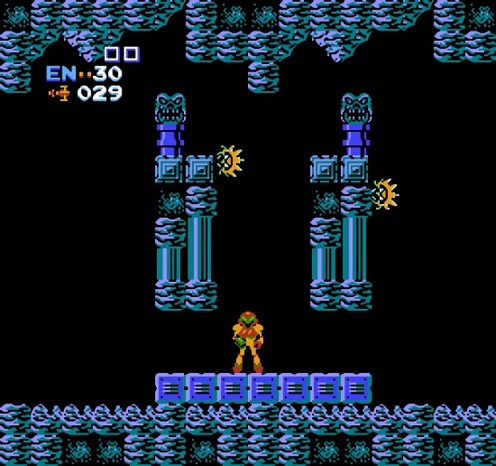"The 10 Most Influential Retro Games" is a feature series that will run daily for the next two weeks, between 12/3/12 to 12/14/12 on weekdays, with each day highlighting one of our ten picks in an unranked order. Follow our tagged page for Most Influential Retro Games to view the entire list. ~Ed. Nick
There once was a man named Gunpei
An engineer with something to say
Game & Watch and Game Boy
are just some of his toys
But his legacy game paved the way.
Metroid is one of those interesting games designed by a group that wasn't known so much for their actual games. Nintendo R&D1 was primarily an engineering group designing new products and hardware, like the NES and Game Boy consoles. Gunpei Yokoi was the head of the department and had his hand in various industries Nintendo experimented with… primarily toys. One run of those toys was the Game & Watch line of portable games in the early 1980s, which in turn became an inspiration for the Game Boy in 1989.
But from that same department came a small group of original titles, the biggest of which was Metroid, a sprawling exploration of an abandoned base on a planet far, far away from here. Samus Aran, the hero, was put in charge of destroying the dangerous Mother Brain which could spawn a race of alien parasites capable of wiping out the human race. It's a dangerous universe out there, and it was Samus's job to make sure the rest of us were safe from it.
At first glance, many a gamer must have thought they were in for a typical side-scrolling title… a staple of the NES as begun by Super Mario Bros. in 1985 (1983 for Japanese players). But the title was anything but. The world was entirely open, a massive map a player could easily become lost in, and without any given direction or instruction, many did. The task Samus was charged with was to find weaponry scattered throughout the map and use them on every enemy in the way of the final goal. Samus could roll into a ball and drop bombs, fire missiles, even freeze enemies in mid-air so they could be used as platforms to reach even higher areas, explore more of the map, and discover more unique terrain and baddie-infested regions.
For anyone who watched my wording throughout the first few paragraphs there, you might have noticed I didn't use any gender pronouns. What, did'ya think I'd spoil the surprise for the rare gamers that haven't heard? Samus—no matter what the instruction manual said—turned out to be a lady killer. And by "lady killer," I mean "lady that killed stuff." That's right: In one of the biggest reveals in gaming history, the space fighter Samus Aran turned out to be a woman the whole time. It wasn't the very first game with a female protagonist—Phantasy Star for the Master System predated it by two years—but it was the first to find itself with a significant following on a major console and really broke the mold for how women could be portrayed in games.
It was also a unique early example for setting in games, not just for the massive map but for the ambiance throughout; the theme music was sparse and dark, with certain areas sharing that utterly alien tune. It wasn't "scary" per se, but was an utterly foreign presentation to anyone used to more energized soundtracks. Reaching certain regions was a form of radar, letting you know from different pitches and tones that something was nearby and waiting for you, whether it's a specific enemy or power-up. A visual representation of an open adventure with a rudimentary radar where I control a badass chick? Sweet, hadn't seen that before!







